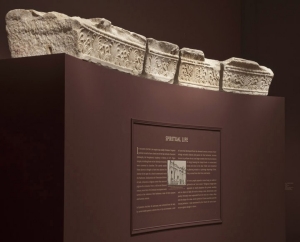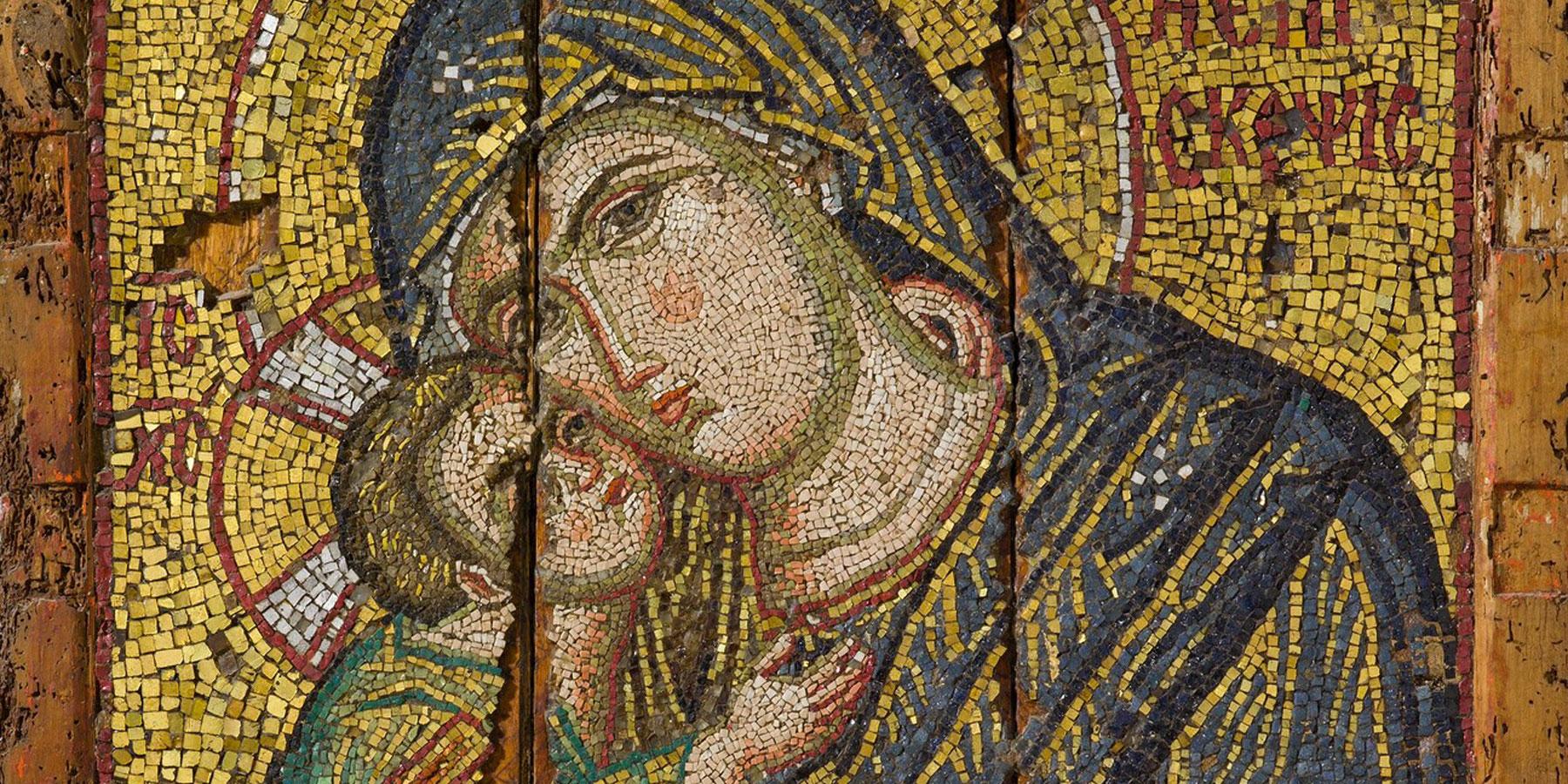In the sixth century, the empire was solidly Christian. Emperor Justinian is said to have closed one of the last schools of ancient philosophy, the Neoplatonic Academy in Athens, in 529. Pagan temples, including those on the Athenian Acropolis, were converted to churches. The carved marble frieze (left) is thought to have once adorned the interior of the apse of a church constructed inside the Parthenon. Dedicated to the Theotokos (Mother of God), it became a religious center that attracted pilgrims for centuries. From c. 600 to the 15th century, more than 230 Christian inscriptions were carved on the columns of the Parthenon, most of them prayers and funerary notices.
Spiritual Life

Fragments of a curved frieze, Attica, end of 5th century, marble, Athens, Byzantine and Christian Museum

Reconstruction drawing of the church inside the Parthenon by M. Korres from Panayotis Tournikiotis, The Parthenon and Its Impact in Modern Times (New York, 1996).
In Byzantine churches, the sanctuary was screened from the laity by carved marble panels, as shown above, or by an iconostasis, a wall of icons that developed from the eleventh century onward. Furnishings included chalices and patens for the Eucharist, incense burners to perfume the air, and large crosses that led processions of clergy bearing the Gospel book or consecrated bread and wine to the altar. Walls were sheathed in glittering mosaics or paintings depicting Christ, Mary, scenes from their lives, and saints.
At home, people prayed to icons hung on walls or gathered in an “icon corner.” Religious images also appeared on small altarpieces for private worship and on objects of daily life such as lamps, coins, dinnerware, and jewelry. Pectorals, worn suspended from the neck on a chain, often took the shape of a cross. As the symbol of Christ’s sacrifice and the ensuing salvation, it was sanctioned by the church for use as protection against danger or harm.
Banner Image: Mosaic icon of the Virgin Episkepsis, Constantinople, late 13th century, glass, gold, and silver tesserae, Athens, Byzantine and Christian Museum
